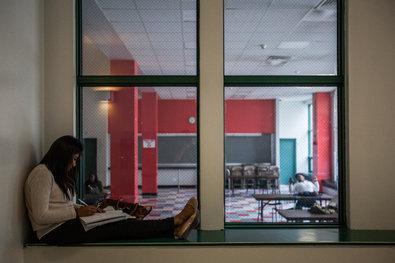
   |

Should College Be Free?
Politicians on the right and left are talking about college affordability. Democratic presidential candidates are divided over how much should be done to ease the cost of higher education. Tennessee is offering free community college tuition to all its high school graduates and a slate of candidates for the Board of Overseers at Harvard University wants to end undergraduate tuition there. To level the playing field, should tuition at public colleges be ended?
* affordability = 감당할 수 있는 비용/ be divided over ~ = ~에 대해 나뉘다/ ease = 낮추다; 덜해지다/ higher education = 고등 교육, 대학 교육/ a slate of candidates = 후보자 명부/ level the playing field = 공평한 경쟁의 장을 만들다![]() 공평한 경쟁의 장을 만들기 위해, 공립 대학의 학비는 없어져야 하나요?
공평한 경쟁의 장을 만들기 위해, 공립 대학의 학비는 없어져야 하나요?
1. The Problem Is That Free College Isn’t Free
A national push for tuition-free college would strain public budgets even further, leading to shortages rather than increased access.
2. Public Higher Education Should Be Universal and Free
It helps students focus on learning rather than working so that they complete degrees faster and having acquired more skills.
3. A Needless Windfall for Affluent Voters and State Institutions
What's more, colleges seeking more public subsidy must stop admitting students who are unprepared academically and have virtually no shot at leaving with a real degree.
4. Tennessee Is Showing How Free Tuition Works
Programs like Tennessee Promise may be changing the conversation about going to college, and enticing students to try community college first.
5. Aid Low-Income Students and Colleges That Serve Them
Tuition, fees and living expenses should be subsidized for poor students, and strong performance should be rewarded with higher grant funding, loan forgiveness and other incentives.
6. A Way to Boost Latinos Access and Completion Rates
Some Latino families don’t even “window shop” for a higher education because sticker prices at some colleges and universities outpace families’
Sample Essay
The Problem Is That Free College Isn’t Free
“Free public college” is a great political talking point, but it is flawed policy.
First, free college isn’t free, it simply shifts costs from students to taxpayers and caps tuition at zero. That tuition cap limits college spending to whatever the public is willing to invest. But it does not change the cost of college, or what institutions actually spend per student. If the past is any guide, that cost will continue to grow, and an influx of federal money may lead profligate administrators to spend even more. Enrollments will also increase, further multiplying the cost of free college.
The key question, then, is what happens if public generosity does not keep pace with rising college costs, increases in demand, or both? Barring a drastic improvement in efficiency, tuition-free colleges won’t have the resources to serve additional students without compromising the quality of their offerings.
As progressive advocates of free college are so eager to point out, public funding hasn’t kept up with such changes in the past. For instance, California has the cheapest community college fees in the nation. During the recession, enrollments boomed and the state budget for higher education took a hit. Unable to raise additional revenue through a tuition increase, California’s community colleges turned away 600,000 students.
A national push for tuition-free college would strain public budgets even further, leading to shortages rather than increased access. And because middle and upper-income students will gobble up many of the free public slots, rationing will hurt those who need access the most.
Advocates will likely argue that federal policy can simply force policymakers to increase funding in response to changes. But today’s political coalition will be hardpressed to tie the hands of tomorrow’s, especially when times are tough.
Second, free college plans assume that tuition prices are the main obstacle to student success, looking past problems of educational quality and college readiness. Take community colleges, where federal grants cover the price of tuition for the average low-income student. Despite free tuition, just one-third of students from the bottom income quartile who started at a community college in 2003 finished a degree or certificate by 2009. Two-year students from the top income quartile didn’t do much better (42 percent).
These numbers suggest that lackluster outcomes are not entirely, or even mostly, a function of tuition prices, but reflect deeper problems. Like the fact that 60 to 70 percent of community college students have to take at least one remedial course, as do 40 percent of those at public four-year institutions. Or the fact that students who attend public four-year colleges with lower graduation rates are less likely to finish than similar peers who attend better schools.
Rather than spread scarce federal money across all students, policymakers should instead target those resources toward those who need it most and empower them to choose the option — public or private — that fits their needs. A valuable degree is worth the investment even if you have to pay something for it.
   |




